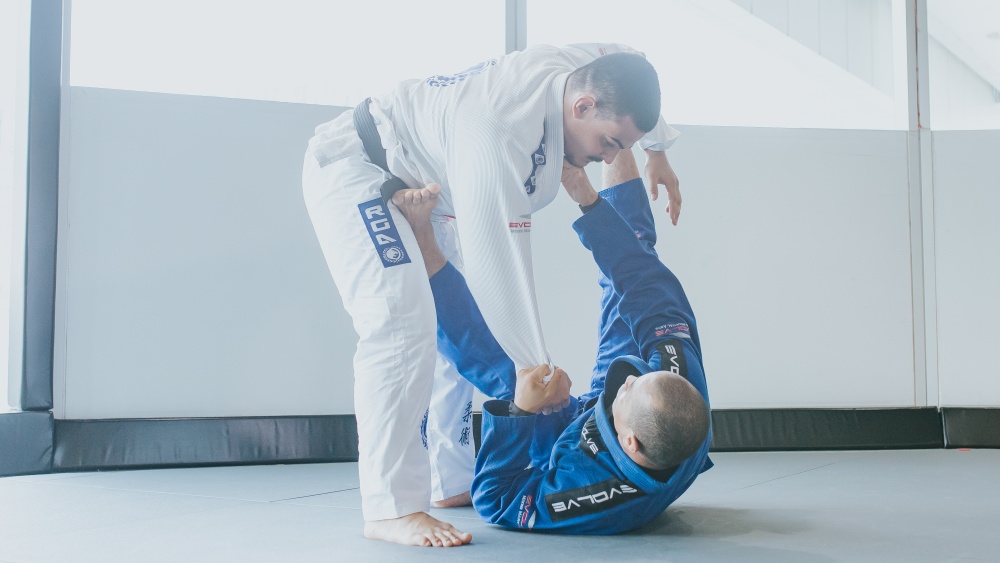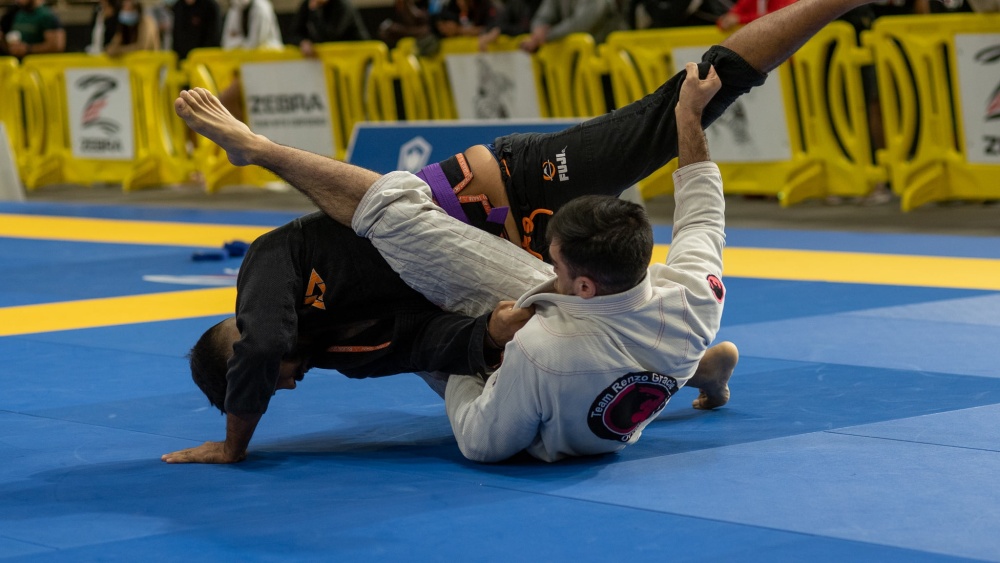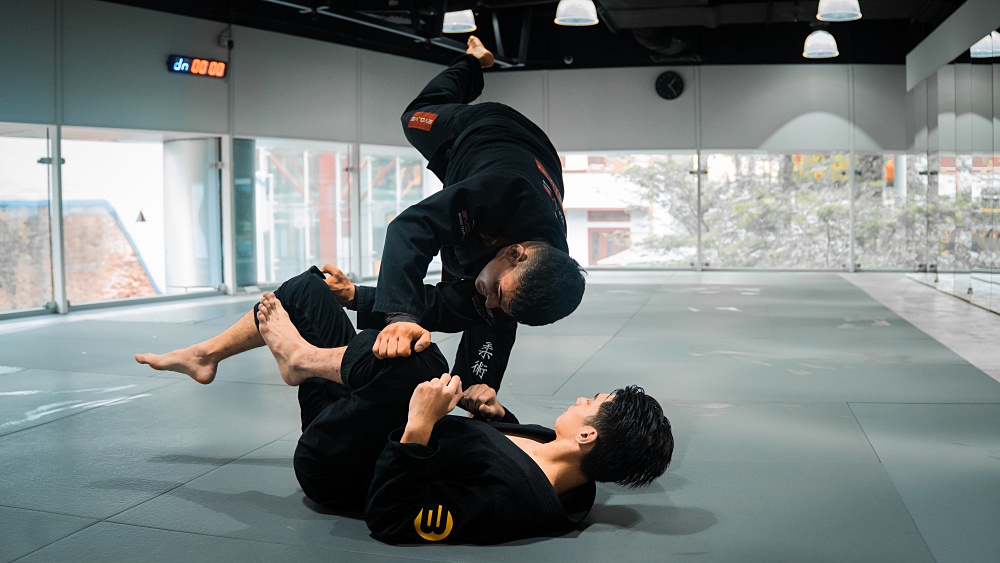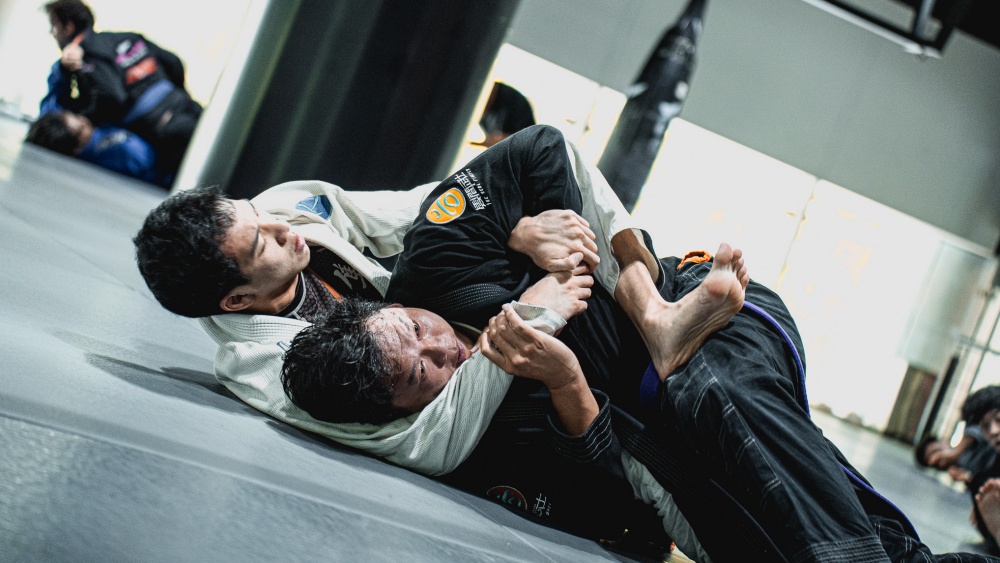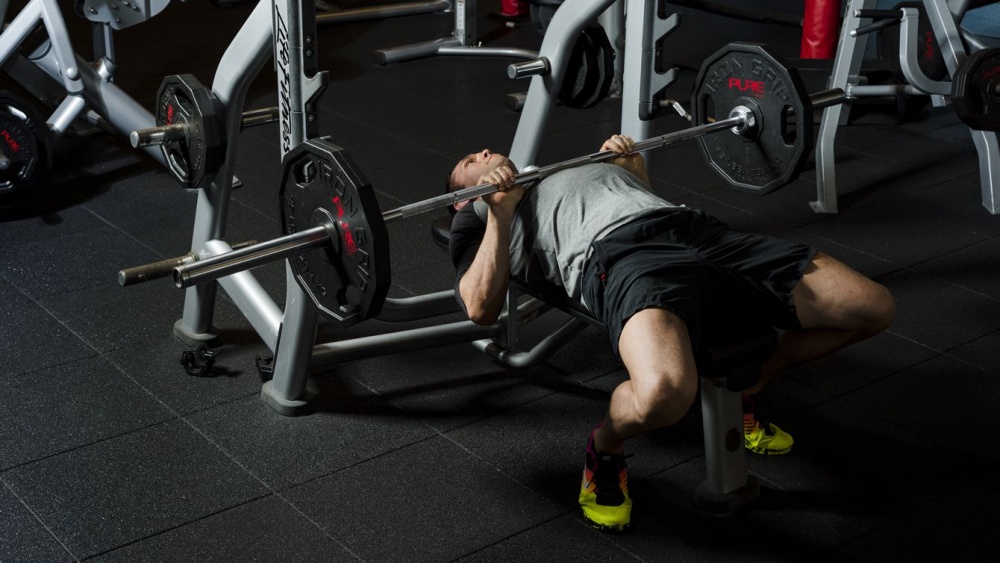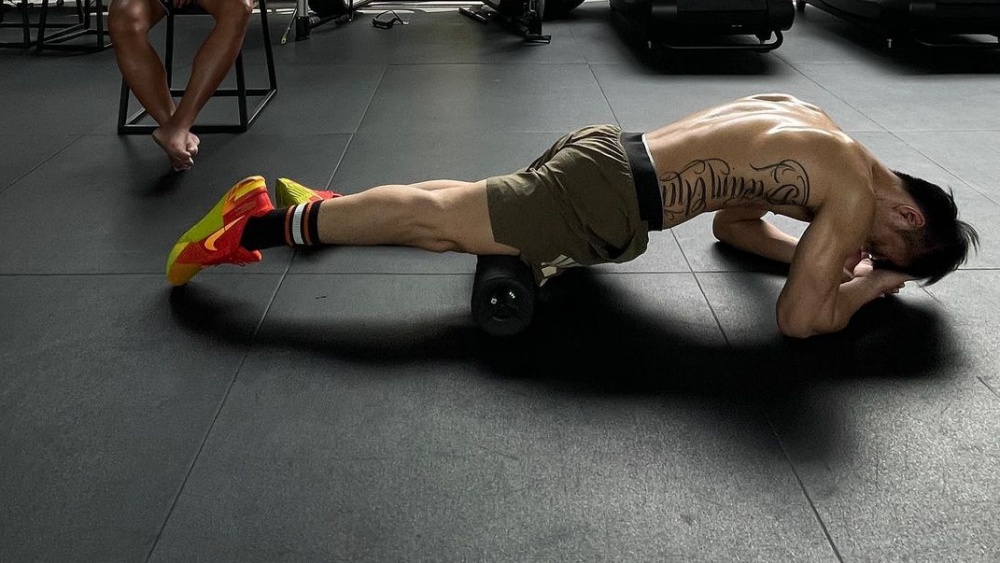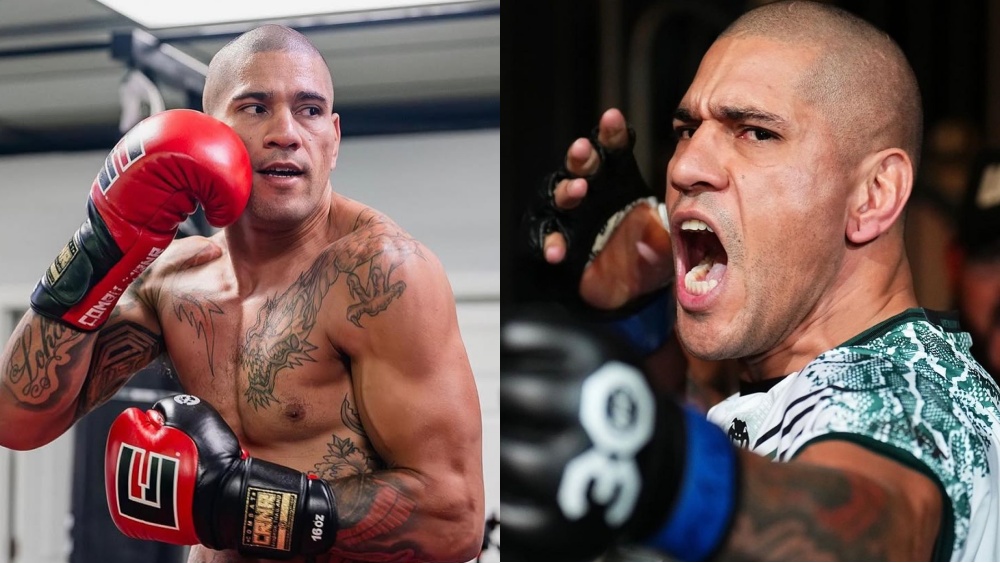Sweeps are an essential aspect of a complete Jiu-Jitsu game. In order to stay offensive when playing guard, it is an absolute must to threaten with sweeps and submissions, forcing your opponent to defend at all times.
One of the most fundamental sweeps a beginner should know are variants of the overhead sweep. Today we’ll talk about the reasons why you should incorporate the overhead sweep into your repertoire.
Sweep Defined
A sweep is a technique that allows the guard player to advance to a more dominant position. Executing a successful sweep requires a good understanding of kuzushi (unbalancing), posture, leverage, and timing to pull off.
Many BJJ athletes over the years have gravitated towards playing the guard as soon as the match starts. It is an absolute must for BJJ players who love to play guard to have a handful of sweeps (on top of submissions) to stay offensive.
There are many benefits to having a solid sweeping game. Aside from the aforementioned ability to advance to a better position, it also gives you more options to work with in terms of attacking your opponent. In order to be successful in playing any form of guard, you should be able to constantly get your preferred angles and grips.
Contrary to popular belief, the guard should be a position where you should always think of forcing your opponent to be on the back foot. The overhead sweep is a nice option, as most sweeps are executed by dumping the opponent to the side; having an overhead variation can be incredibly useful because many practitioners don’t expect it in their rolls.
The Overhead Sweep
The overhead sweep is a technique where you position yourself underneath your opponent’s center of gravity with the intention of flipping them overhead, or sometimes to the side.
There are many ways to execute the overhead sweep, but it is mainly applied inside the guard. Depending on the guard you choose, you can transition your body to a configuration where you can act as a post and then use it to unbalance the opponent for the sweep.
In this video, the Evo BJJ Youtube Channel demonstrates the four basic components of the overhead sweep: grips, getting under the opponent’s center of gravity, elevation, and shoulder or backward roll.
First, you need to get your preferred grips. Using the collar and sleeve grip works best here as it is easy to get. Next, you generate kuzushi by getting under the opponent’s center of gravity as you elevate the body. The more power you generate, the easier it is to do in one motion. Once you lift the body, do a backward shoulder roll to finish the sweep. The sweep should land you directly to mount in most cases.
Triangle Choke And Overhead Sweep From Collar Sleeve Guard
Lachlan Giles shows a cool sequence you can attempt from the collar sleeve guard. He suggests entering the collar sleeve guard by first getting a sleeve grip and using a shallow lasso on the controlled arm as you get the collar grip. Once you get your grips, you can move your foot to the hip. Always break their posture as much as possible. You can do this by pushing with your foot on the hip while pulling the sleeve. From here, you can transition to the triangle choke by wrapping your legs around the neck and moving slightly at an angle for the finish.
The overhead sweep is an alternative to the triangle choke from the collar sleeve guard. If the opponent takes the inside space, you can move to the de La Riva guard by looping your leg around theirs. Once you establish the DLR hook, you can proceed to the overhead sweep by placing your other foot on the midsection as you do a backward roll.
The secret to a dangerous guard game is to attack using a rotation of sweeps and submissions. Most beginners have trouble pulling off techniques because they are too focused on just one attack rather than using a series of moves. As you get better at BJJ, it is a good idea to build systems based on specific scenarios so that you can generate your offense regardless of where you are positionally. This is easier said than done, of course. This process will take many years of trial and error, so don’t fret if you are still developing this.
Don’t forget to drill techniques like the overhead sweep as it requires a certain level of coordination to execute. The part where you need to lift the opponent as you do a backward roll is especially critical as most beginners are not yet confident in their forward and backward rolls.
Start by drilling the entry up until the point of elevating your opponent. Do this every time you train and focus on smooth and technical movement. Once you get the hang of this, you can move to the part where you need to do a backward roll from the elevated position.
Be careful with your first few attempts and communicate with your training partner so that you work as a unit. Train your techniques the right way, and always ask for feedback from your coach to ensure that you perform them well.
Conclusion
While there are hundreds of sweeps to choose from, only a few are regarded as must-learn techniques. These are sweeps that are effective regardless of rank and applicable for most body types.
The overhead sweep is one of those fundamental techniques because it mainly relies on leverage and body mechanics to work. It does require some level of coordination as you need to move near or underneath your opponent’s center of gravity to flip them over, but it’s not too difficult, all things considered.
We highly recommend the overhead sweep to those looking for simple and effective sweeping techniques to add to their game. Try the overhead sweep, and let us know if it works for you!
You may also like:
